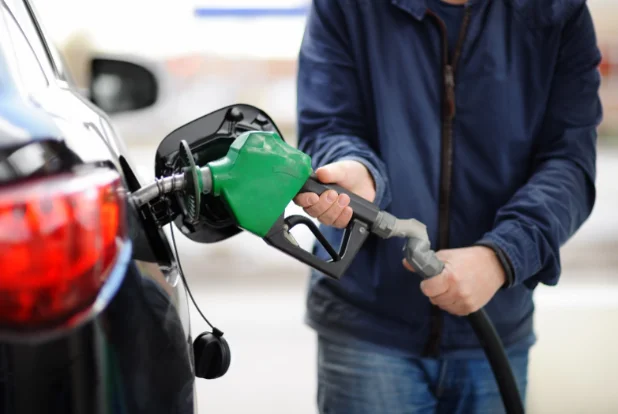Few mistakes can cause as much confusion and potential harm as using the wrong fuel. It’s a simple error, yet one that can lead to a complex array of problems. This article delves into what exactly happens when the wrong fuel finds its way into your car’s tank and how you can manage these situations effectively.
The Harmlessness and Hazards of Incorrect Fueling
At times, mistakenly using the wrong fuel type can be relatively harmless, especially if corrected immediately. However, in severe cases, such as filling a non-flex-fuel vehicle with E85 ethanol, the consequences can be dire. This mistake can lead to voided engine warranties or significant damage to fuel lines and engines, incurring steep repair costs.
Diesel Fuel Mishaps: A Double-Edged Sword
One common blunder is mixing up diesel and gasoline. When diesel is put into a gas car, it can clog fuel filters and injectors almost instantly, as diesel is thicker than regular gasoline. This leads to your vehicle becoming inoperable without warning. Conversely, using gasoline in a diesel engine can be just as problematic. Gasoline ignites quicker than diesel, potentially causing extensive damage to fuel sensors and the engine due to excessive heat.
What Should You Do If You Put E85 In A Gas Car?
Another common mishap occurs with E85 ethanol. E85 ethanol, primarily derived from biomass materials like corn, is designed for newer flex-fuel vehicles. Using E85 in a regular gasoline car might not cause immediate damage but can trigger the check engine light. Repeated use, however, can lead to severe fuel system corrosion. Moreover, such a mistake might void your car’s engine warranty, leaving you financially responsible for repairs.
Immediate Actions: Handling Wrong Gasoline Situations
In either of the above scenarios, if you realize you’ve used the wrong fuel, the first step is to stop driving immediately to prevent further damage. The next course of action is to get your vehicle towed to a professional for a system flush. This process typically involves draining the fuel tank and cleaning the fuel lines to ensure no residual incorrect fuel remains.
Insurance Coverage and Legal Recourse
It’s a common misconception that auto insurance will cover the costs associated with the damage caused by wrong fuel; however, this is usually not the case. It’s always prudent to check with your insurer for confirmation like tutenagency, an exclusive agent with Allstate. If a gas station is responsible for the mistake, consulting a legal professional for potential compensation for repair and towing costs is advisable.
Prevention is Better Than Cure: Avoiding Fueling Mishaps
The best way to avoid these issues is through prevention. Always be certain of the fuel grade and type your vehicle requires. Stay focused while fueling, and remember, if the nozzle doesn’t fit snugly into your tank, it’s probably the wrong fuel.
Detailed Preventative Measures to Avoid Wrong Fueling
While it’s crucial to know what to do in case of using the wrong fuel, it’s even more important to take steps to prevent such a scenario from occurring. Here’s a comprehensive checklist and tips for drivers to ensure they always choose the right fuel for their vehicle:
- Know Your Fuel Type: Always be aware of the specific type of fuel your vehicle requires. Check your owner’s manual or the label inside the fuel door if you’re unsure.
- Fuel Grade Stickers: Look for stickers or labels near your fuel gauge or filler cap that indicate the correct fuel type for your vehicle.
- Regularly Check Fuel Requirements: Vehicle manufacturers occasionally update fuel requirements. Stay informed about any changes for your specific model.
- Use Reminder Tools: Consider using a fuel reminder app or setting a reminder on your phone, especially if you switch between vehicles that use different fuel types.
- Fuel Nozzle Check: Before fueling, always double-check that the nozzle color and label match your vehicle’s fuel type. Different countries have different color-coding systems for fuel types.
- Avoid Distractions: Stay focused during fueling. Avoid using your phone or getting distracted by other activities.
- Educate Others Who Use Your Vehicle: If others, like family members or employees, use your vehicle, ensure they are also aware of the correct fuel type.
- Frequent Visual Checks: Regularly inspect your vehicle for any signs of fuel system issues, such as leaks or strange noises, which could be exacerbated by using the wrong fuel.
- Develop a Routine: Make it a habit to always do a quick fuel type check before every fill-up. Consistency helps prevent mistakes.
- Be Extra Cautious When Renting or Using a New Vehicle: If you’re driving a rental or a new vehicle, take extra time to familiarize yourself with its fuel requirements.
- Stay Informed About Fuel Types: Educate yourself about different fuel types, such as diesel, regular gasoline, and E85. Understanding their differences can help prevent confusion at the pump.
- Check Before Refueling in Unfamiliar Places: When traveling or in areas with different fueling stations, always double-check the fuel type, as nozzle designs and color codes can vary.
By following these steps, drivers can significantly reduce the risk of fueling errors, saving time, money, and the inconvenience of dealing with the aftermath of using the wrong fuel.
Conclusion
Mistakes happen, and using the wrong fuel is one of those errors that’s easy to avoid with a little knowledge and care. Always be sure about the fuel your car needs, and stay alert at the gas station. In case you do fill up with the wrong type, the best action is to stop driving and seek professional assistance. Consistently choosing the correct fuel for your vehicle is more than just a good practice; it’s essential for the health and longevity of your car. By following these simple steps, you can keep your vehicle in top condition and avoid the hassle and expense of fuel-related issues.
FAQs
Can wrong fuel damage be covered under warranty?
In most cases, damage caused by using the wrong fuel is not covered under the vehicle’s warranty. This is considered an owner’s error, not a manufacturing defect. Always check your vehicle’s warranty details for specifics, as policies can vary between manufacturers.
How do I know if my vehicle is a flex-fuel vehicle capable of using E85?
Flex-fuel vehicles are designed to run on more than one type of fuel, including E85 ethanol. You can identify if your vehicle is flex-fuel capable by looking for a badge on the car’s rear, checking the owner’s manual, or looking for a yellow fuel cap or a sticker near the fuel filler.
Is there any way to mitigate the damage while waiting for professional help after using the wrong fuel?
If you realize you’ve used the wrong fuel, the best immediate action is to turn off your vehicle and avoid starting the engine. This prevents the wrong fuel from circulating through the system. However, there’s no safe “do-it-yourself” remedy for removing the wrong fuel; professional service is needed.
What are the signs that I might have used the wrong fuel?
Signs that you’ve used the wrong fuel include the engine not starting, a sudden loss of power, unusual noises from the engine, excessive smoke from the exhaust, and the vehicle stalling shortly after filling up.

